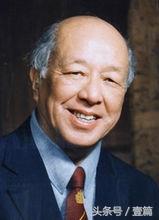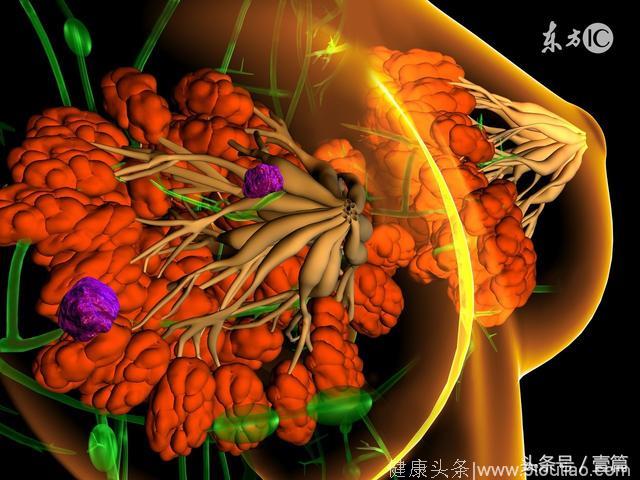美国《临床肿瘤杂志》:罗氏新药T-DM1可替代乳腺癌新辅助化疗
10余年来,肿瘤治疗药物研发取得了极大进展,尤其是生物制品的出现,增加了医生和患者对肿瘤药物的选择机会。传统的小分子化疗药物一般是非特异性的,并可能产生严重的副作用;相反,更具靶向性的单克隆抗体(mAb)药物一般具有非常强的选择性,虽然严重不良事件也偶有发生,不过整体而言,其副作用相对较小。理想的药物就是把具有优异临床疗效的靶向特异性抗体和小分子药物的药代动力学结合起来,这就是抗体-药物偶联物(ADC)。结合单克隆抗体靶向作用和小分子药理学治疗模式的应用,使抗体-药物偶联物技术迅速发展。抗体-药物偶联物结构是具有靶向作用的单克隆抗体与具有特定药理学特性(如细胞毒作用)的化合物结合。ado-trastuzumab emtansine(T-DM1)是一种以HER-2为靶点的抗体-药物共轭物,由曲妥珠单抗(trastuzumab)、稳定的硫醚键和细胞毒类药物美坦辛(DM1)构成,由基因泰克公司(已被罗氏收购)开发,曲妥珠单抗可靶向作用于乳腺癌和胃癌人表皮生长因子受体2(HER2),而emtansine是美登素的合成衍生物(美登素是一种小分子毒素,可与微管蛋白结合,通过非还原的双-马来酰亚胺-丙二醇联合体防止微管形成)。
《壹篇》按


美国《临床肿瘤杂志》2017年7月6日在线先发
http://ascopubs.org/doi/full/10.1200/JCO.2016.71.9815
在HER2阳性早期乳腺癌中的降阶梯策略:“在HER2和HR均阳性的早期乳腺癌中优化风险评价和优化疗效预测并依据标志物进行动态调整的个体化辅助治疗的II期随机化西德研究组临床试验”的终期分析——曲妥珠单抗美坦辛±内分泌治疗对比曲妥珠单抗+内分泌治疗的疗效、安全性和预测性标志物目的
人表皮生长因子受体2(HER2)阳性/激素受体(HR)阳性乳腺癌是一种独特亚型,与HER2阳性/HR阴性乳腺癌相比,化疗敏感性低,但转归略好。“西德研究组临床试验ADAPT(在早期乳腺癌中优化风险评价和优化疗效预测并依据标志物进行动态调整的个体化辅助治疗试验)”在HER2阳性/HR阳性早期乳腺癌中比较了曲妥珠单抗美坦辛(T-DM1)对比曲妥珠单抗的病理完全缓解率(pCR)。
患者与方法
在这项前瞻性II期新辅助临床试验中,随机将375名HER2阳性、HR阳性的早期乳腺癌患者分组,一组为12周的曲妥珠单抗美坦辛(T-DM1)±内分泌治疗,一组为12周的曲妥珠单抗+内分泌治疗。主要终点为病理完全缓解率(ypT0/is/ypN0),次要终点包括安全性和对病理完全缓解率(pCR)早期反应的预测影响。遵循国家标准进行辅助治疗。
结果
各组间入组时的基线特征基本一致,超过90%的患者按照试验方案完成了治疗。观察到曲妥珠单抗美坦辛(T-DM1)治疗的患者有41.0%获得病理完全缓解,曲妥珠单抗美坦辛(T-DM1)+内分泌治疗的患者有41.5%,曲妥珠单抗+内分泌治疗的患者有15.1%(P<0.001)。早期有治疗响应者(占可评价治疗响应患者的67%)有35.7%获得了病理完全缓解、无响应者有19.8%(比值比,2.2;95%CI,1.24-4.19)。曲妥珠单抗美坦辛(T-DM1)与1、2级毒性发生率明显高相关,特别是血小板减少、恶心和肝酶升高。总的毒性不高,报告了17件治疗相关性严重不良事件(T-DM1组对比曲妥珠单抗+内分泌治疗组分别为5.3%对比3.1%)。
结论
ADAPT HER2阳性/HR阳性试验表明,给予仅2周的曲妥珠单抗美坦辛(T-DM1)(联合或不联合内分泌治疗)新辅助治疗,可获得有临床意义的病理完全缓解,因此,相当数量的患者可免受全身化疗的不利影响。
《壹篇》南南和北北




Purpose
Human epidermal growth factor receptor 2 (HER2)–positive/hormone receptor (HR)–positive breast cancer is a distinct subgroup associated with lower chemotherapy sensitivity and slightly better outcome than HER2-positive/HR-negative disease. Little is known about the efficacy of the combination of endocrine therapy (ET) with trastuzumab or with the potent antibody-cytotoxic, anti-HER2 compound trastuzumab emtansine (T-DM1) with or without ET for this subgroup. The West German Study Group trial, ADAPT (Adjuvant Dynamic Marker-Adjusted Personalized Therapy Trial Optimizing Risk Assessment and Therapy Response Prediction in Early Breast Cancer) compares pathologic complete response (pCR) rates of T-DM1 versus trastuzumab with ET in early HER2-positive/HR-positive breast cancer.
Patients and Methods
In this prospective, neoadjuvant, phase II trial, 375 patients with early breast cancer with HER2-positive and HR-positive status (n = 463 screened) were randomly assigned to 12 weeks of T-DM1 with or without ET or to trastuzumab with ET. The primary end point was pCR (ypT0/is/ypN0). Early response was assessed in 3-week post-therapeutic core biopsies (proliferation decrease ≥ 30% Ki-67 or cellularity response). Secondary end points included safety and predictive impact of early response on pCR. Adjuvant therapy followed national standards.
Results
Baseline characteristics were well balanced among the arms. More than 90% of patients completed the therapy per protocol. pCR was observed in 41.0% of patients treated with T-DM1, 41.5% of patients treated with T-DM1 and ET, and 15.1% with trastuzumab and ET (P < .001). Early responders (67% of patients with assessable response) achieved pCR in 35.7% compared with 19.8% in nonresponders (odds ratio, 2.2; 95% CI, 1.24 to 4.19). T-DM1 was associated with a significantly higher prevalence of grade 1 to 2 toxicities, especially thrombocytopenia, nausea, and elevation of liver enzymes. Overall toxicity was low; seventeen therapy-related severe adverse events (T-DM1 arms v trastuzumab plus ET; 5.3% v 3.1%, respectively) were reported.
Conclusion
The ADAPT HER2-positive/HR-positive trial demonstrates that neoadjuvant T-DM1 (with or without ET) given for only 12 weeks results in a clinically meaningful pCR rate. Thus, a substantial number of patients are spared the adverse effects of systemic chemotherapy.

《壹篇》(与桓兴医讯同步)系主要面向医务人员的公益性头条号,不以营利为目的,不进行任何有偿咨询和服务,不出售任何产品,与ASCO、CSCO等所有专业学会和机构没有任何关系和联系,也不代表任何官方学会发声。
文章图片均来自网络,不做商业用途,若有版权争议请与《壹篇》联系。
坚持点赞、赞赏和转发是一种态度和支持。